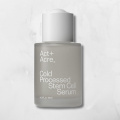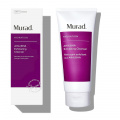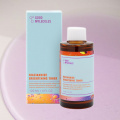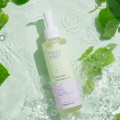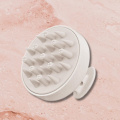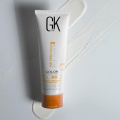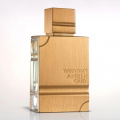Homemade Hair Toner Solutions for Naturally Vibrant And Luscious Locks
Learn about homemade hair toner, its benefits, usage frequency, side effects, and how to use it in the process of achieving one’s desired hair shades.
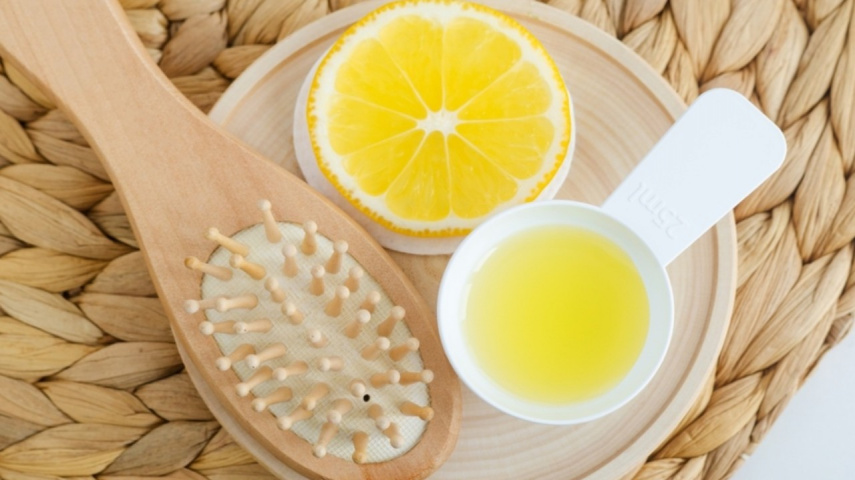
Homemade hair toners offer a natural, easy-to-prepare, and cost-effective solution to enhance the color and appearance of your hair. You will mostly find all the ingredients on your kitchen counter or refrigerator, which makes it convenient and helpful in maintaining your desired hair color without any salon visits. Moreover, sometimes when our DIY hair bleaching process goes slightly amiss, you can end up with either too bright, orange, or brassy hair – a hair toner is the only savior as it counteracts unwanted undertones, adds vibrancy, and promotes healthier-looking hair.
These DIY hair toning solutions have gained popularity over the years. Understanding how to create and use homemade hair toners can empower you to personalize your hair care routine and achieve the desired results without the use of harsh chemicals. In this guide, we will explore the benefits, potential considerations, and methods for effectively using homemade hair toners to elevate your hair game.
What is a Hair Toner?
A hair toner is a hair care product or treatment designed to adjust the color and tone of your hair, particularly after bleaching or lightening. It helps to neutralize or enhance certain undertones in your hair, such as removing unwanted brassiness or adding cool or warm tones. Hair toners are often used to achieve a more desirable and balanced hair color, such as platinum blonde, ash blonde, or silver, by counteracting any undesirable hues that can arise during the lightening process. Toners can come in various forms, including shampoos, conditioners, masks, or liquid solutions, and they usually contain pigments that target specific color issues. They provide a final touch to achieve the desired shade and can be an essential step in achieving the perfect hair color.
How Does a Hair Toner Work?
A hair toner works by neutralizing or adjusting the undertones in your hair to achieve the desired color. It's commonly used after bleaching or lightening hair to counteract unwanted hues like yellow or orange. These hues arise naturally in black or pigmented hair. Other than that, yellow undertones may also typically arise due to various other external influences such as bleaching, hard water, sulfates from haircare products, previous hair colors, etc. The toner contains color pigments that are opposite to the undertones on the color wheel, effectively canceling them out. For example, purple toner helps neutralize yellow tones, while blue toner combats orange tones. Applying the appropriate toner for your desired result helps achieve a more balanced and appealing hair color.
Things to Know About Hair Toner
Here are some facts about hair toners that one must keep in mind before making or using one:
- Neutralizing Undertones: Hair toners are used to neutralize or correct unwanted undertones in bleached or colored hair. For example, purple toners counteract yellow tones, while blue toners address orange tones.
- Semi-permanent Color: Most hair toners are semi-permanent and gradually fade with each wash, providing temporary color correction.
- Toning Shampoos And Masks: Toning shampoos and masks are popular products that contain color-depositing pigments. They help maintain the desired tone between salon visits.
- Color Wheel Principle: Hair toners work on the color wheel principle, where colors opposite each other cancel each other out. For instance, purple neutralizes yellow, and blue neutralizes orange.
- Bleached Hair Benefits: Hair toners are commonly used after bleaching to achieve the desired blonde shade and eliminate brassiness.
- Different Tones: Hair toners offer a range of tones, from neutral to cool and warm, allowing for customization of the final hair color.
- Application Time Matters: The duration a toner is left on the hair affects the outcome. Leaving it on for a shorter time results in a more subtle effect, while a longer application yields a more intense tone.
- Professional And DIY: Hair toning can be done at a salon by professionals or at home using products like toning shampoos or DIY toner mixtures.
- Various Formulations: Toners come in different forms, including liquid, cream, and powder. Choosing the right formulation depends on personal preference and application ease.
- Post-treatment Care: Using sulfate-free shampoos and color-protecting products can help prolong the life of the toner and maintain the desired hair color.
How to Make DIY Hair Toners at Home?
Using Kitchen Ingredients
Let us discuss the hair toner that you can make using just some kitchen ingredients:
1. Apple Cider Vinegar Hair Wash
Due to its mild acidity, apple cider vinegar (ACV) can effectively reduce the pH level of environmentally damaged and dull hair, which often exhibits a higher pH (1). Using an acidic rinse helps seal the hair's cuticles, and safeguards deeper, more vibrant hues from premature fading (1). Moreover, it is particularly beneficial for counteracting unwanted brassiness in blondes or light brunettes, and neutralizing orange or yellow undertones.
Instructions:
- Prepare a solution of apple cider vinegar wash by diluting 4 tablespoons of ACV with 2 tablespoons of water in a container.
- Gently apply this toning solution throughout your hair, allowing it to sit for 15 minutes.
- Follow with a rinse using lukewarm or cool water.
- To prevent potential hair dryness, limit usage to no more than once or twice every two weeks.
2. Baking Soda Shampoo
Baking soda shampoo serves as a potent clarifying treatment for the hair. When combined with food coloring, it is believed to eliminate product and mineral buildup while counteracting the inherent warm tones in your hair. However, it's important to note that there's a lack of scientific validation for these claims. In fact, research indicates that products with elevated pH levels, like baking soda, may escalate the risk of hair breakage, damage to the cuticle, and increased frizz (2). Consequently, it's advisable to refrain from frequent use of this ingredient.
Instructions:
- To create this mixture, gather sulfate-free shampoo, two drops each of blue and purple food coloring, and one teaspoon of baking soda.
- Blend these components in a jug with a few tablespoons of water, set it aside, and then proceed to rinse your hair.
- Subsequent to rinsing with water, apply the prepared shampoo mixture to wash your hair.
- Allow the shampoo to remain on your hair for 5-10 minutes before rinsing it out. Follow up with the conditioner, and if desired, add a few drops of food coloring to the conditioner for added toning.
- It's crucial not to use this shampoo blend more than once a week, as frequent application can lead to hair dryness.
- On alternate days, you can opt for a regular sulfate-free shampoo mixed with a few drops of purple and blue food coloring.
3. Lemon Hair Toner Mask
Lemon, abundant in vitamin C, is renowned in skincare for its antioxidant qualities and overall skin brightening (3). The usage of lemon in hair care offers a natural method to subtly lighten blonde hair and counteract gray tones in lighter shades (though it's important to note that the effect isn't as dramatic as with chemical bleach—natural products have their limitations).
Instructions:
- Blend a mixture of 75% lemon juice with 25% conditioner.
- Apply the blend to your hair, gently distributing it from roots to ends using a comb.
- Allow it to stay for a minimum of 1½ hours, potentially overnight (you could use a shower cap).
- Rinse using warm water, followed by a deep conditioner to replenish moisture, and proceed with your usual styling routine.
4. Hollyhock Cleansing Solution
With its diverse range of hues such as blue, pink, purple, red, white, yellow, and even black, the Hollyhock flower offers a spectrum of colors (4), (5). Yet, it's the purple variant that holds the key to eradicating unwanted brassy tones.
Instructions:
- Begin by boiling 2 tablespoons of apple cider vinegar, 2 tablespoons of hollyhock herb, and 1 cup of water until a concentrated mixture is obtained.
- Once cooled, gently apply the solution to your hair, allowing it to sit for approximately 30 minutes.
- Afterward, thoroughly rinse and proceed with your usual conditioning routine.
5. Using Green Tea as a Hair Toner:
Research has demonstrated that green tea can stimulate hair growth within the scalp's dermal papilla cells (6). Its moderate green hue makes it a suitable option for toning. Depending on your hair color, alternatives like black or oolong tea could also be considered.
Instructions:
- Boil 3 green tea bags in 2 cups of water.
- Allow the mixture to attain a faint green hue.
- Apply the solution to your hair, letting it sit for approximately 30 minutes.
- Periodically check your hair to determine if the desired shade is achieved. Rinse thoroughly after the toning process.
6. Virgin Olive Oil
Utilizing virgin olive oil as a DIY hair toner is supported by research indicating its potential not only for promoting hair growth and damage prevention but also for enhancing hair color (7). If your hair was slightly darker prior to bleaching or coloring, incorporating olive oil could effectively darken pigments and counteract brassy tones.
Instruction:
- Take an appropriate amount of virgin olive oil and heat it in a container, adjusting the quantity based on your hair length.
- Gently massage the oil onto your scalp and allow it to sit for an hour.
- Rinse off the oil using a sulfate-free shampoo.
7. Indigo for Toning
Derived from the Indigofera tinctoria plant, dark indigo color can significantly improve hair color and impart shine (8). This hue is particularly effective in neutralizing unwanted brassy orange tones.
Instruction:
- Mix 1 tablespoon of indigo powder with 4 tablespoons of white conditioner.
- Apply the mixture evenly to your hair.
- Monitor your hair color during the application process.
- Once the desired color is achieved, cleanse your hair with water and a sulfate-free shampoo.
8. Betony Wash
The lavender-toned betony flower provides a natural approach to hair toning due to its distinct purple color.
Instruction:
- Create a "tea" using hot water and the betony flowers. Allow them to steep until a vibrant hue develops. After cooling, strain the mixture and transfer it to an applicator bottle (an old shampoo bottle can work).
- Apply the solution to your hair and leave it on for around 30 minutes.
- Rinse thoroughly and follow up with conditioning.
Using Hair Dye Boxes And Food Coloring:
You can also make hair toners using box dyes and food colorings in the following manner:
1. Box Dye for Ash Blonde Hair
Ash-toned boxed dyes are effective in eliminating yellow or orange undertones from hair. They achieve this by counterbalancing warm tones with cooler ones.
Instructions:
- Gather an ash-blonde dye box, protective gloves, a mixing bowl, and an applicator brush.
- Blend the dye according to the box instructions in a plastic bowl.
- Apply the dye evenly onto your hair and adhere to the specified time duration mentioned on the box (usually around 30 minutes).
- Rinse your hair using a sulfate-free shampoo and follow up with conditioning.
- This process is a one-time requirement.
2. Purple Toning
Purple and blue dyes are optimal choices for correcting color; they neutralize the yellow or orange hues by working opposite to them on the color wheel.
Instructions:
- Combine 1 tablespoon of purple hair dye with 3 tablespoons of conditioner in a mixing bowl to create a lavender mixture.
- Apply this mixture specifically to areas requiring toning.
- Allow it to sit for 30 minutes before washing it out using a sulfate-free shampoo.
- Repeat this process whenever your hair exhibits yellow tones.
3. Green Toning for Brown Hair
Green toning is tailored for brown or dark hair, especially if it has been dyed brown. It effectively addresses orange and red undertones.
Instructions:
- To your conditioner, add 2-3 drops of green food coloring.
- If there are stronger orange tones, mix 2 drops of green food coloring with 1 drop of blue food coloring.
- After thorough shampooing, apply the mixture to your hair and leave it for 10 minutes.
- Rinse it off with cool water.
Why Opt for Homemade Hair Toner Solutions?
Choosing homemade hair toner solutions offers several compelling advantages:
- Natural Ingredients: Homemade toners often consist of natural ingredients, reducing the exposure to harsh chemicals present in commercial products. This can be gentler on your hair and scalp.
- Customization: DIY toners allow you to tailor the formula to your hair's specific needs. You can adjust the ingredients and their proportions based on your hair color, texture, and desired outcome.
- Cost-effective: Homemade toners are typically more budget-friendly than store-bought options, as they often require common household ingredients.
- Less Sensitivity: Some individuals may have sensitivities or allergies to certain ingredients found in commercial products. Making your own toner lets you avoid potential irritants.
- Temporary Effects: Homemade toners tend to provide temporary results that gradually fade, which can be advantageous if you're uncertain about committing to a particular hair color.
- Personalized Care: By formulating your own toner, you can address specific hair issues you may have, such as brassiness or dullness, with a solution tailored to your needs.
- Sustainability: Homemade toners reduce packaging waste associated with commercial products and can align with a more sustainable lifestyle.
However, it's important to note that homemade solutions might not always provide the same consistent and precise results as professional salon treatments or commercial products. Additionally, incorrect formulations could lead to undesired outcomes, such as further brassiness or damage. Research, proper understanding of ingredients, and patch testing are crucial before applying any homemade hair toner to ensure the best results. If in doubt, consulting a professional hairstylist is recommended.
Conclusion:
Homemade hair toner solutions can be easily prepared at the convenience of your home. It offers a rewarding choice for those seeking a natural, customizable, and cost-effective approach to hair care. The ability to harness the power of natural ingredients, tailor formulations to individual needs, and experiment with various shades while avoiding harsh chemicals are notable advantages. The experience of crafting your own toner can also be educational and satisfying, allowing you to better understand the intricacies of hair color and care. However, it's vital to exercise caution and ensure proper research, ingredient understanding, and patch testing to achieve the desired results. While homemade toners offer numerous benefits, consulting a professional stylist or colorist when in doubt can help ensure the health and beauty of your hair.





 JOIN OUR WHATSAPP CHANNEL
JOIN OUR WHATSAPP CHANNEL





































